TLDR:
- TradingView currently generates around 45 million visits from organic search each month (ahrefs)
- SEO is their biggest traffic source by some distance (similarweb)
- Traffic is spread internationally, with only 5% coming from the US
- TradingView generates 63% of their organic traffic to their programmatically generated asset pricing pages
- These pages are enhanced by user generated content
TradingView is a platform for analysing financial markets used by 60 million + users each month, boasting a valuation of $3 billion in 2021, and has raised $339 million since their seed round in 2013.
While technically classified as a ‘retail’ product, the charts and dashboards are institutional-level in terms of sophistication.

TradingView’s chart for MSFT stock price
Their audience ranges from relative beginners to experienced professionals playing with millions of dollars.
TradingView’s ability to successfully cater towards both these audiences, and everyone in between, is a testament to their product team’s skill, and has enabled them to stand out in a ‘barbell market’, where most tools tend to be either too complex for retail investors, or too simplistic for advanced users.
Their growth has been driven primarily by their strong community, who advocate passionately for the platform across youtube, twitter, reddit, and other platforms.
This community growth is also pushed within the product itself, where expert traders regularly share tips and feedback about their strategies, helping fellow users to become better investors.
Tellingly, TradingView describe themselves as a ‘charting platform and social network’ on their website, emphasising the role that community plays in their overall strategy.
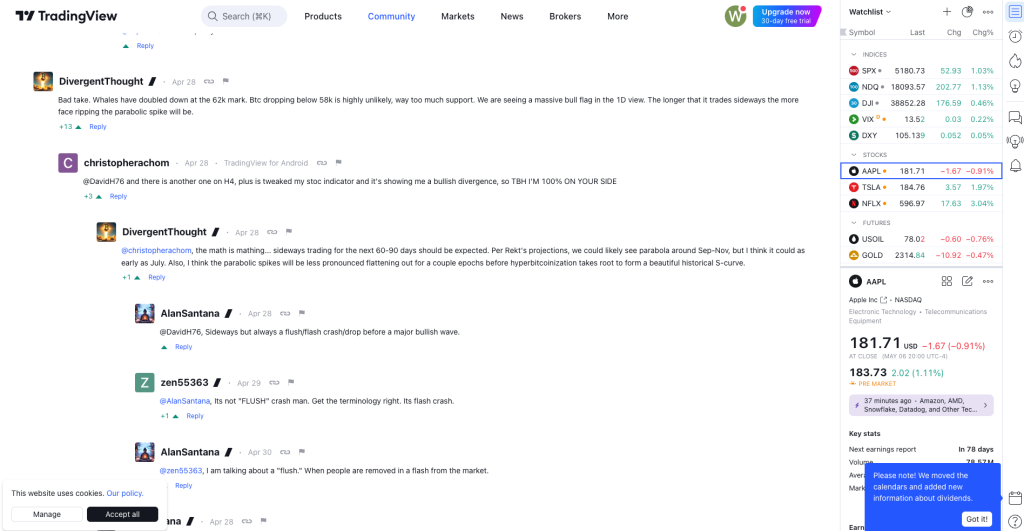
A discussion on a TradingView thread
The platform has become the go-to destination for high quality conversations around trading, thanks to TradingView providing a great space to do so.
This creates a network effect, whereby the more users who use the platform, the more compelling it becomes, and the more users it attracts in turn.
So, what role does SEO play in all this? Similarweb estimates them to be generating 109 million visits per month, making SEO their biggest traffic source by a notable distance (other than ‘direct’, which will likely be existing users navigating to the site to log into the web app).
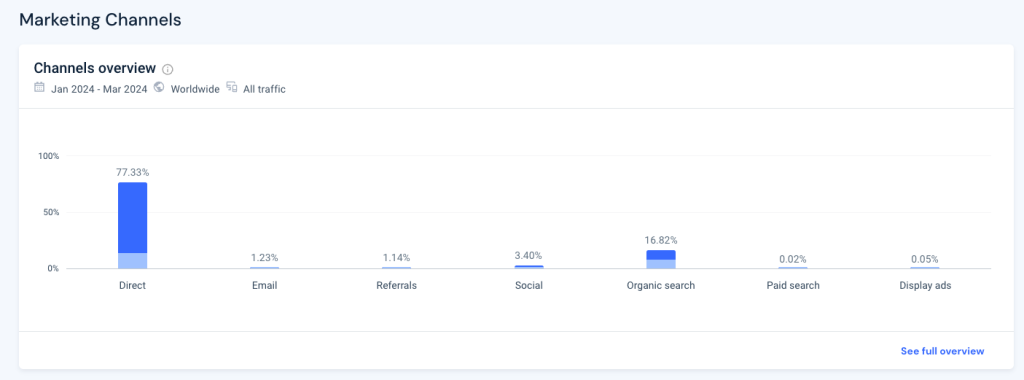
So how exactly are they getting this traffic? And what can we learn from them? In this deep dive I’d like to focus on three core elements of their strategy:
- International SEO: how some smart international SEO plays allow them to tap into diverse markets that reflect their global customer base and in-house team structure,
- Programmatic SEO: how they generate millions of visitors through asset pricing pages that closely mirror the dashboards within the actual product, and
- User Generated Content: How they lean into user generated content to rank for terms related to trading.
We’ll also think about how this ties into their wider business strategy, as well as think about if there are any other opportunities they could take advantage of in future.
Without further ado, let’s dive in!
Status Quo
Let’s move away from SimilarWeb and into Ahrefs to get more specific with our SEO data.
Ahrefs estimates TradingView to be generating 45.2 million visits from organic search each month.
To try and put that in some sort of context, it’s similar to Yahoo Finance, well ahead of Nasdaq, and around half of investing.com.
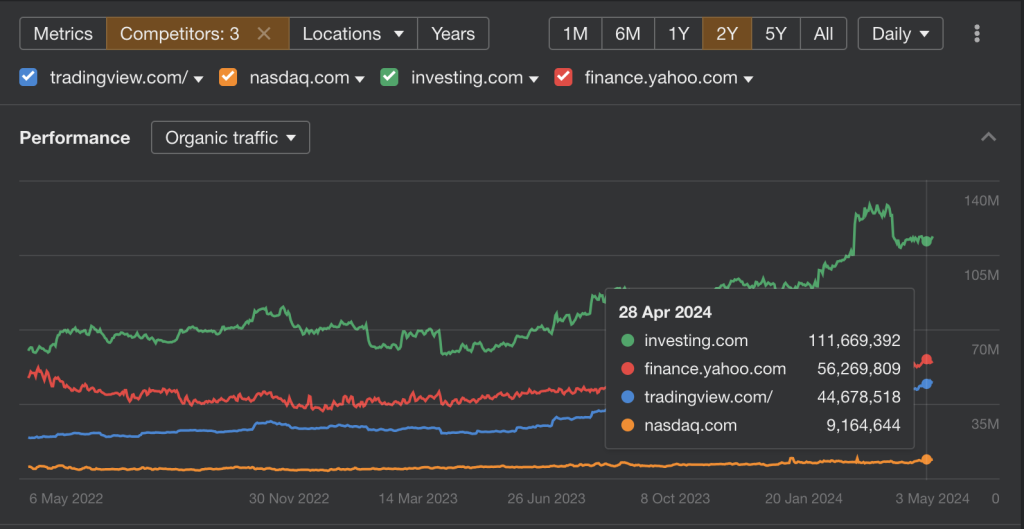
16 million of this total (~35%) is branded, which is more of a testament to brand strength than SEO performance.
28.8 million is unbranded, and is what we want to zoom in on here.
International SEO Strategy
What immediately stands out is their traffic spread across different markets. While the competitors referenced above generate most of their traffic from the US, TradingView’s traffic is much more dispersed:
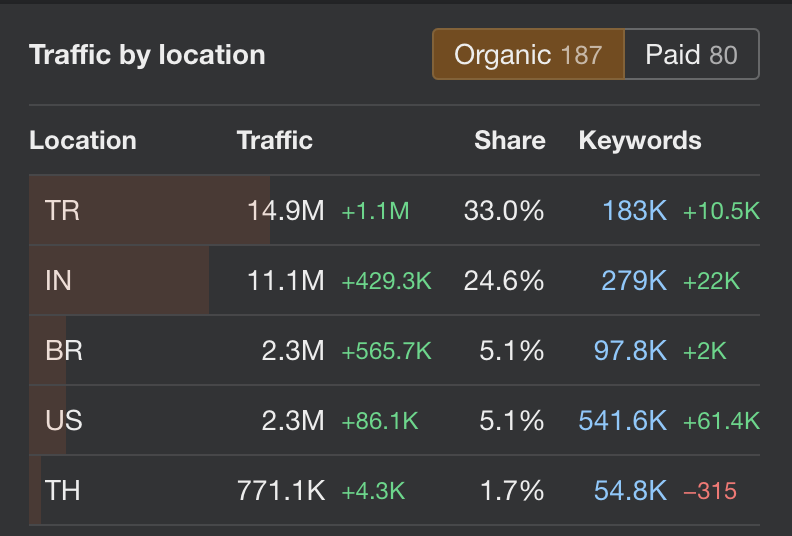
TradingView’s organic traffic share by country
Taking a closer look, we can see 33% of their traffic is coming from…Turkey!
With India in second (24.6%), before we get to Brazil and the US, tied with 5.1% apiece.
If we look a little closer, we can see that TradingView has built language specific versions of their site into subdomains.
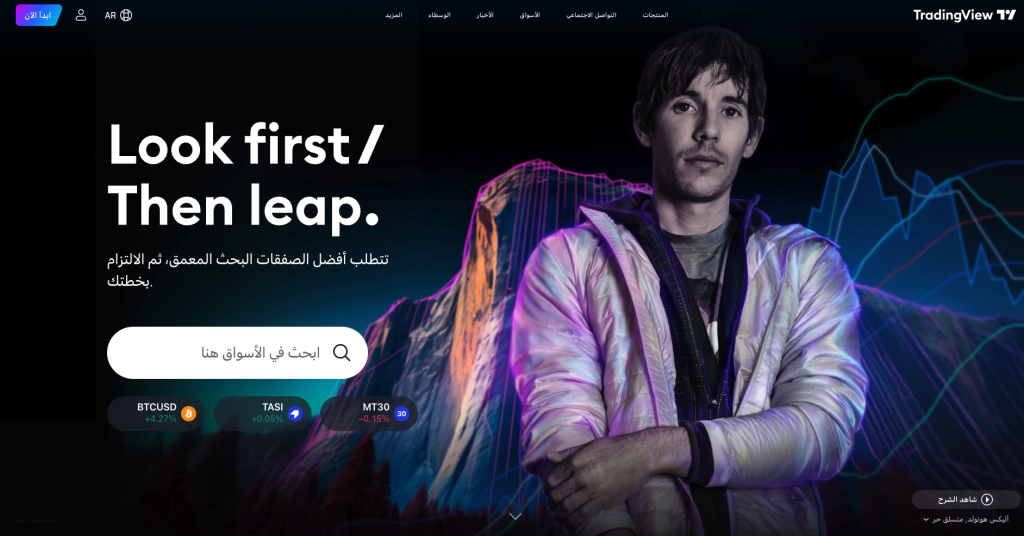
The Arabic version of TradingView’s homepage (featuring renowned climber Alex Honnold)
By inspecting their code, we can take a look at their hreflang tags, which help explain the international structure to Google, and also enable us to quickly see which countries or languages they’re targeting.
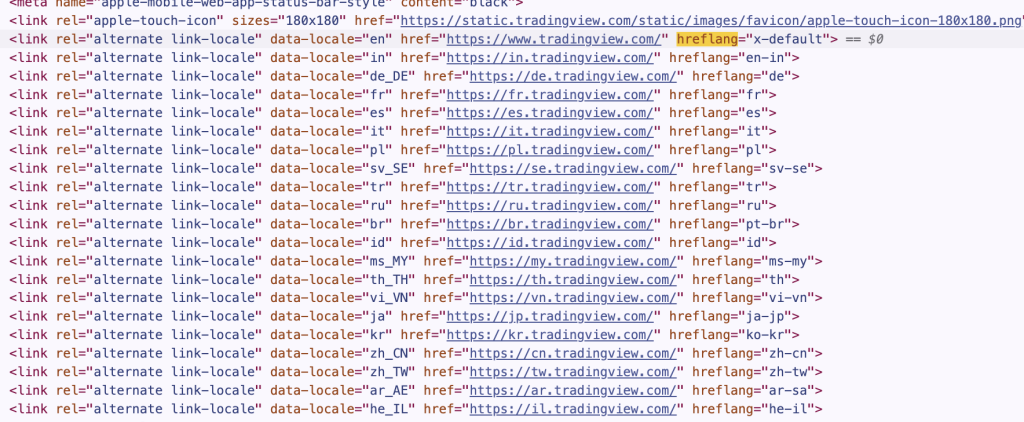
What jumps out here is the combination of language and country-specific versions of the site.
They have country-specific versions of the site for India for example, which could be served by the default English site. Similarly, they have a Brazil-specific version, rather than just a Portuguese language.
| Subdomain | Monthly Organic Traffic |
| tr.tradingview.com | 12,856,345 |
| in.tradingview.com | 9,084,783 |
| www.tradingview.com | 7,614,841 |
| br.tradingview.com | 1,682,275 |
| es.tradingview.com | 1,673,247 |
| ar.tradingview.com | 1,054,957 |
| th.tradingview.com | 675,288 |
| pl.tradingview.com | 616,430 |
| it.tradingview.com | 606,525 |
| ru.tradingview.com | 573,972 |
| jp.tradingview.com | 566,770 |
| de.tradingview.com | 534,196 |
| fr.tradingview.com | 434,024 |
| tw.tradingview.com | 404,089 |
| vn.tradingview.com | 403,645 |
| id.tradingview.com | 397,550 |
| il.tradingview.com | 189,079 |
| kr.tradingview.com | 150,715 |
| se.tradingview.com | 67,690 |
| cn.tradingview.com | 22,182 |
| my.tradingview.com | 14,521 |
I’m a huge fan of international SEO and think it’s probably the biggest untapped opportunity for big international software products. And TradingView clearly lean into this hard.
Having said that, I would argue TradingView could do slightly more in the US, given this is likely their biggest market.
Indeed, if we look at the competitors we looked above in terms of search market share in the US, we can see TradingView actually lags behind quite significantly.
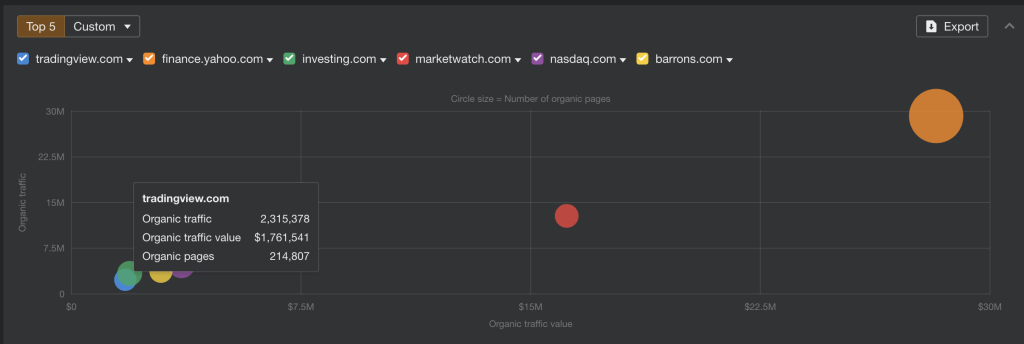
TradingView lag behind competitors in the US
Programmatic SEO
The 80/20 principle is very common in SEO – i.e. 80% of the results coming from 20% of the effort.
TradingView generates 27 million monthly visits, or 83% of their unbranded traffic, to their programmatically generated asset pricing pages, which encompass stocks, indices, futures, forex, and crypto.
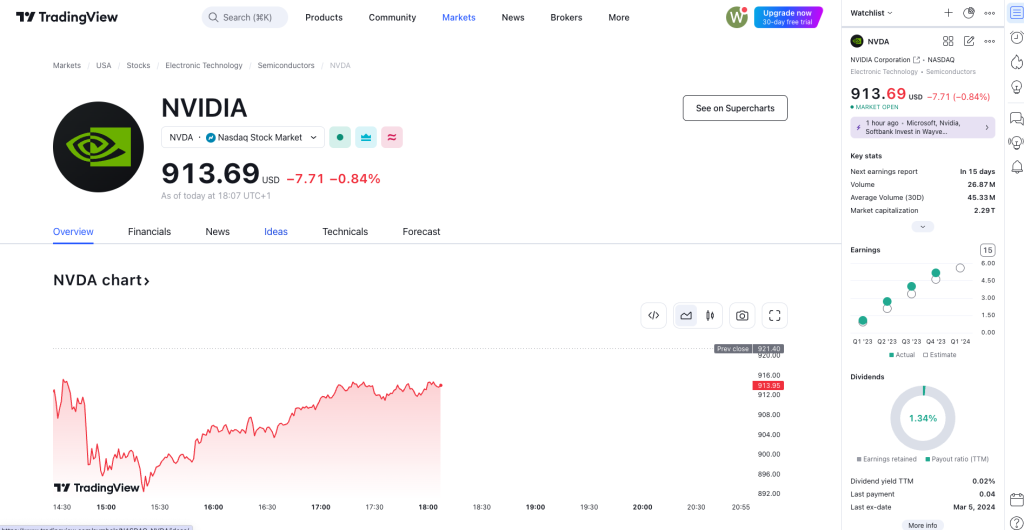
TradingView’s page ranks in position 1 in the US for ‘nvda price’ (238k searches per month)
These 650k pages use the same template and are populated programmatically with the database they use for their charts. These templates are perfectly designed for both search engines and users.
I’ve copy pasted a few examples this figma file:
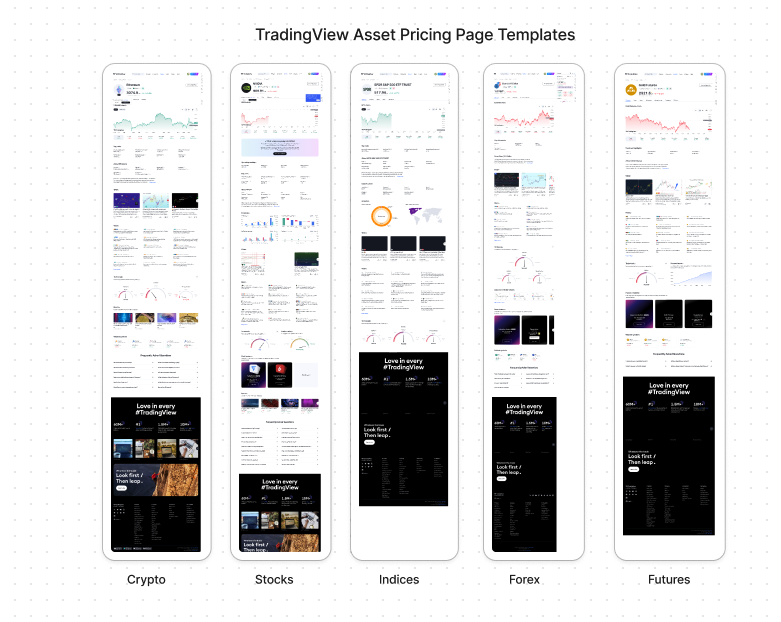
TradingView use one template for 650k pages
Category Pages
A classic programmatic strategy is grouping pages to match popular ‘category’ searches. TradingView generates 93k monthly visits to their /markets subfolder, where they group stocks into popular categories.
This allows them to rank on page one for terms like ‘most active stocks’ (7.5k), ‘top penny stocks’ (3k), ‘large cap stocks’ and many more.
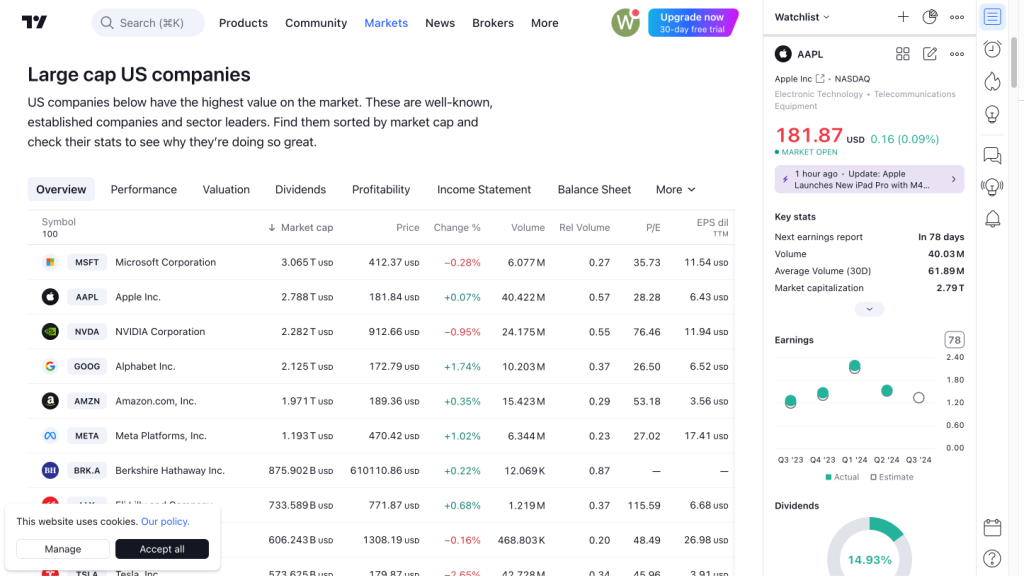
TradingView’s page ranking in position 1 for ‘large cap stocks’
User Generated Content
These asset pricing pages generate millions of eyeballs each month. These eyeballs are then directed towards high quality user generated content, via the ‘Ideas’ tab.
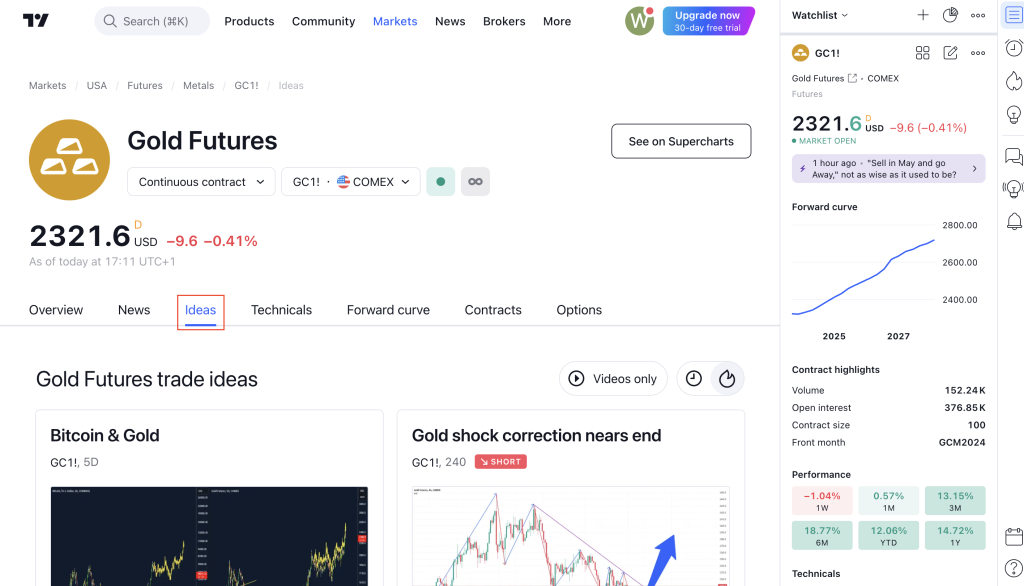
The ‘ideas’ tab on TradingView’s asset pricing pages leading to high quality user discussions about the asset
This user generated content offers insights that no other platform can, and is therefore a unique advantage in maximising user engagement (a key google ranking factor in high competition SERPs like this).
This user generated content also ranks in Google’s results in its own right, but doesn’t currently bring in any notable traffic. This is because it tends to be time sensitive commentary and ideas, rather than evergreen guide-style content.
In fact, there doesn’t seem to be any editorial content from TradingView themselves. All the content seems to be either user generated or syndicated from news sites like Reuters.
This is arguably a missed opportunity, but it also keeps content operations super lean and completely free of editorial bottlenecks.
Closing Thoughts and Opportunities
TradingView have combined programmatic and international SEO to devastating effect, allowing them to scale to tens of millions of monthly visits all without having to write any content themselves.
User Generated Content is carefully interwoven to create a rich user experience that would be impossible to emulate as a competitor.
If they wanted to keep pushing, the things I’d look at would be:
- Build US traffic. Currently they’re “only” generating ~5 million monthly visits in the US.
- Create best-in-category editorial content that focuses on advanced trading topics with demand in search, leveraging insights from their community.
- Add an internal link recommendation engine to automatically link between relevant asset pricing pages. This might help boost ranking (especially in US where competition is really fierce).
And that’s it! If you’d like to talk advice, please feel free to book a call on the link in the footer!
